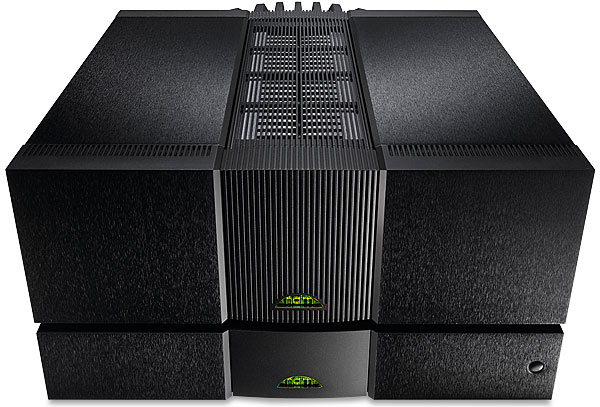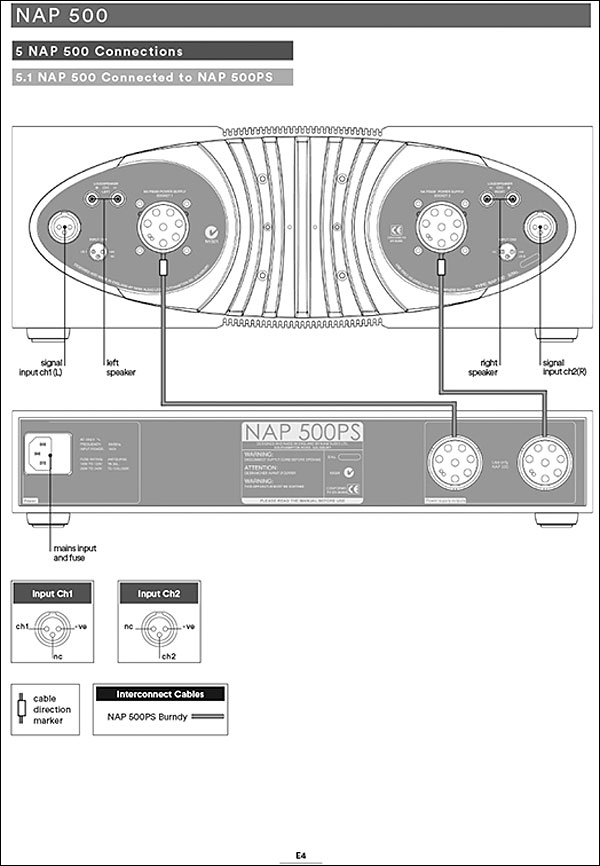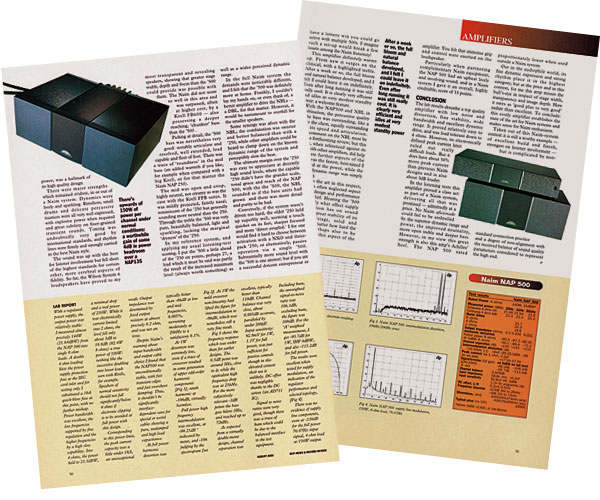Naim NAP 500 power amp Page 2
The amplifier was modelled over some months in B2 Spice, an electronic CAD programme, and using device models specified by Naim. Supply-line noise was considered to be a vital issue, and by painstaking analysis the sources of supply and other noise were tracked down, and solutions found. At high power, eg, 200W into 4ohm, the supply noise is better than 125dB down, a major achievement.
![]() Sound Quality
Sound Quality
To begin with, I tried out the NAP 500 in an all-Naim system – NAC 52, NAP 250, CDS II player and NBL loudspeakers – and was thrilled by the degree of edge-of-the-seat excitement and drama. Maximum level for the system was felt to be on a par with the bigger and more efficient DBL speakers when fed by six actively coupled NAP 135s. Dynamic range is a key quality of the NBL: an ability to read fine low-level detail in the presence of heavy, complex modulation. With the NAP 500, that quality was even more clearly registered. Some synergy was occurring!
It was time to slot the amp into my audiophile system using cables that included a special set made up for me by van den Hul UK. With my Conrad-Johnson ART preamp, the NAP 500 drove a pair of Wilson System 6 speakers to a high standard, confident, with a wide dynamic range and consistent in quality over a wide span of loudness. It didn't compress at peak levels, and its ability to hold tight to complex detail, irrespective of power, was a hallmark of its high-quality design.

There were strengths which remained evident, in or out of a Naim system. Dynamics were lively and sparkling. Rimshots, small drums and delicate percussive nuances were all very well expressed, with explosive power when required and great subtlety when it came to finer-grained transient sounds. Timing was undoubtedly very good by international standards, and rhythm lines were carried both firmly and strongly in the finest Naim style.
The sound was up with the best for listener involvement but fell short of the highest standards for certain other, more cerebral aspects of fidelity. The System 6s have so far proved to be my most transparent and revealing speakers, showing that greater stage width, depth and focus than the '500 could provide was possible with them. The Naim NAP 500 did not score so well in this area and was surpassed, albeit at higher cost, by a Krell FB600 amp – also possessing a deeper reaching, 'chunkier' bass than the NAP 500.
Fleet Of Foot
Picking at detail, this new amp's bass was nevertheless very good, being articulate and resolved, well extended, load capable and fleet of foot. However, there was a trace of 'roundness' in the mid bass (an added warmth if you like, for example when compared with a big Krell amp, or for that matter the NAP 250).
The mid was open and crisp, highly neutral, not creamy as was the case with the Krell FPB series. It was mildly projected, faintly nasal, reminiscent of the '250 but generally sounding more neutral than the '250. Through the treble the '500 was very pure, beautifully balanced, light and sparkling, lacking the marginal 'dryness' of the '250.
In my reference system, and applying my usual listening-test scoring, I put the NAP 500 a little ahead of the '250 on points, perhaps 27, a lead which it must be said was partly the result of the increased maximum level (always worth something) as well as a wider perceived dynamic range.
Heart Breaker
In the full Naim system the demands were noticeably different, and I felt that the NAP 500 was definitely more at home. Frankly, I couldn't lay my hands on, or even think of, a better amplifier to drive the NBLs – or a DBL, for that matter. However, it would be tantamount to overkill for the smaller loudspeakers.

Some synergy was afoot with the NBL. The combination was sweeter and better balanced than with a '250, while other amplifiers could be heard to clamp down on the known dynamic range of the system and perceptibly slow the beat.
The margin over the '250 was easy to appreciate at high sound levels, where the capable '250 didn't have the grander scale, tonal grace and reach of the NAP 500. With the '500, the NBL sounded as if the bass units had grown and there was more detail and purity.
Conversely, if the system wasn't driven too hard, the older '250 held up superbly well, seeming a touch quicker on its feet, sharper focused and more 'direct coupled'. I for one would find it hard to choose between activation with a NXO and three-pack '250, or alternatively, passive operation via a single '500.
Substantially more sound level with the '500 is one answer, but if you are a successful dotcom entrepreneur or perhaps have a lottery win you could go active with multiple 500s. I imagine such a set-up would break a few hearts among the Naim fraternity!
This amplifier definitely warms up. From new it verges on the clinical, with a highlighted treble. After a week or so, the full bloom and natural balance developed, and I felt I could leave it on indefinitely. Even after long running it was still really cool. It is clearly very efficient and idles at very modest standby power: a welcome feature.
Full Speed
With the NAP 500 and NBL in combination, the percussive quality of the bass was outstanding, like a fist to the chest. Equally outstanding were its speed and articulation. More comment on the NBL must be left to a forthcoming review, but this speaker, when referenced against its sound with other amps, illuminated further aspects of the '500. It was the fastest I have heard at the power, while the full-bore dynamic range was simply exceptional.
It defines the art in this respect, bringing this often neglected aspect of amplifier design and performance into clear relief. Hearing the '500 reveals exactly what effect supply line modulation has on sound quality. The great stability of its stereo soundstage, solid and immovable no matter how hard the going, was perhaps also to be associated with this aspect of the amplifier. You felt that immense grip and control were exerted on the loudspeaker.

Particularly when partnering complementary Naim equipment, the NAP 500 had an upbeat lively and involving sound, and in a Naim system I gave it an overall, highly creditable, score of 33 points.
Conclusion
The subsequent lab results described a top quality amplifier with low noise and distortion, fine stability, wide bandwidth and excellent dynamic range. It proved relatively easy to drive, and was load tolerant down to 4ohm. However, its electronically defined peak current limit ruled out really difficult loads. Yet it does boast about 50% more peak current than previous Naim designs and is also about 3dB louder.
In the listening tests this amplifier proved a class act as part of a Naim system, delivering all that was promised – admittedly at a price. No Naim aficionado could fail to be enthralled by the superior dynamic range and power, the improved neutrality, more open treble and deeper bass. However, in my view this great strength is also this amp's Achilles' heel. The NAP 500 rated proportionately lower when used outside a Naim system.
Out in the audiophile world, this amp misses the bull's-eye in respect of stage width, transparency and image depth. Here it rates as 'good plus to very good' rather than excellent. To conclude: this costly amplifier establishes the state of the art for Naim systems and makes sense for Naim enthusiasts.
Taken out of this Naim-system context it is still a worthy example, but is complicated by non-standard connection practice and a degree of non-alignment with the balance of sound quality parameters considered to represent the high-end.
























































